Stump capping ceremonies: laying the foundation of the Queensland weatherboard building
By Christina Ealing-Godbold, Research Librarian, Information Services | 14 December 2020
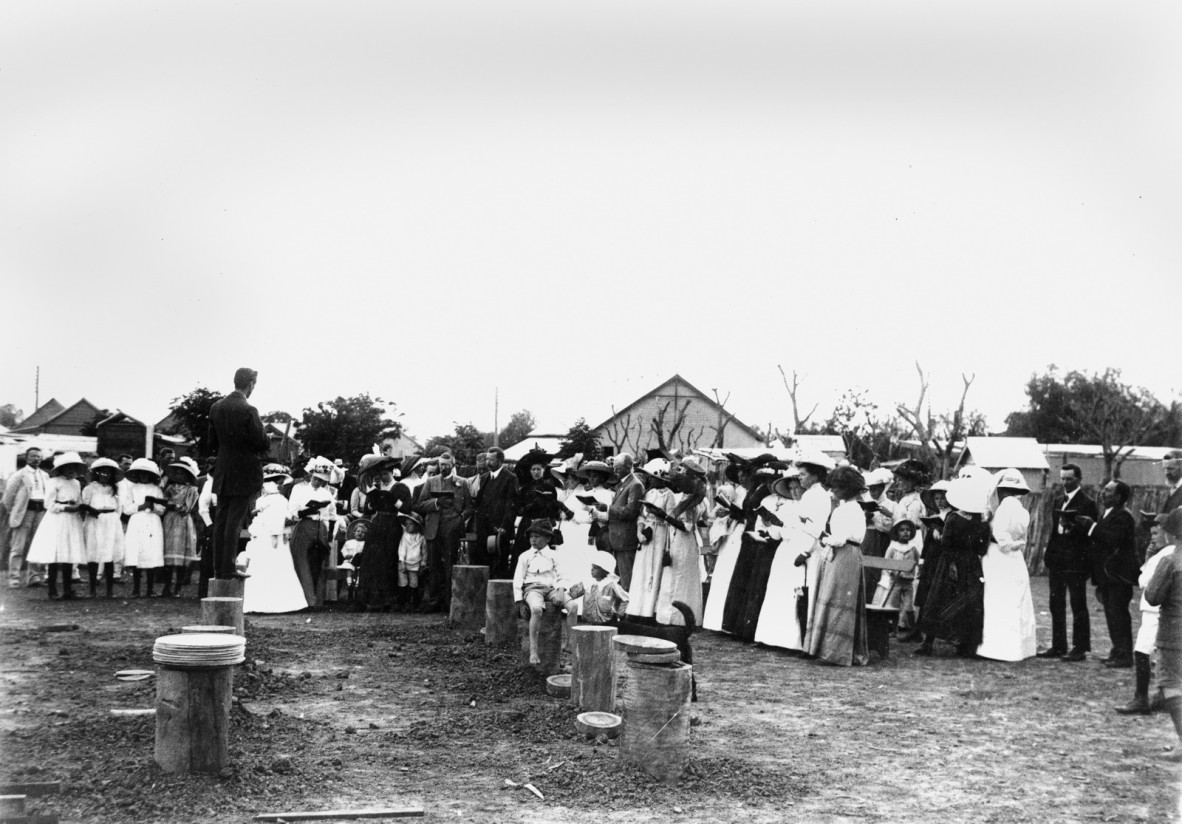
Stump capping of the Blackall Methodist Church, ca. 1912. John Oxley Library, State Library of Queensland Neg No: 56634. The church opened on 16 January 1913. The Preacher was Reverend Walminson of Barcaldine and the Minister was Reverend Evans.
Ritual is an important part of our lives. The beginning and completion of projects are usually marked with an event. With stone buildings, it was usual to lay a foundation stone to celebrate the beginning of the building project. Schools, libraries, churches and other public buildings made of brick or stone typically had a foundation stone laying service. Sometimes, that foundation stone would include coins, historical documents, such as newspapers, and other items that would serve as a time capsule to be discovered by future generations.
The foundation stone of the original Brisbane Town Hall was lost for generations, thought to have been discarded with debris, but in 1938 it was accidently uncovered, complete with a sovereign, half-sovereign and various other coins as well as a wet and pulpy newspaper.
Courier Mail, 26 May 1938, p 1. Image from Trove.
But what ceremony could be conducted when the building was constructed of timber and erected on stumps?
By the time of federation, most Queensland houses and many Queensland churches and public buildings were constructed of weatherboard. Prior to the laying of the flooring and the erection of the timber frame, stumps were inserted into the ground.
Andrew Jenner in his book The building of the Queensland House 1880–1920: A carpenter’s handbook and owner’s manual (2012) describes the stumping system:
The stumps themselves are made of one of the finest timber varieties in the world: the ironbark species. Immensely strong, dense and durable, when set three or four feet into the ground they form a rigid foundation requiring no bracing at normal heights, with the excellent advantage of enabling houses to be built on almost any slope: any block of land could now support a dwelling … The average stump gave a clearance of five or six feet under the bearers of the house, and would therefore be nine or ten feet long
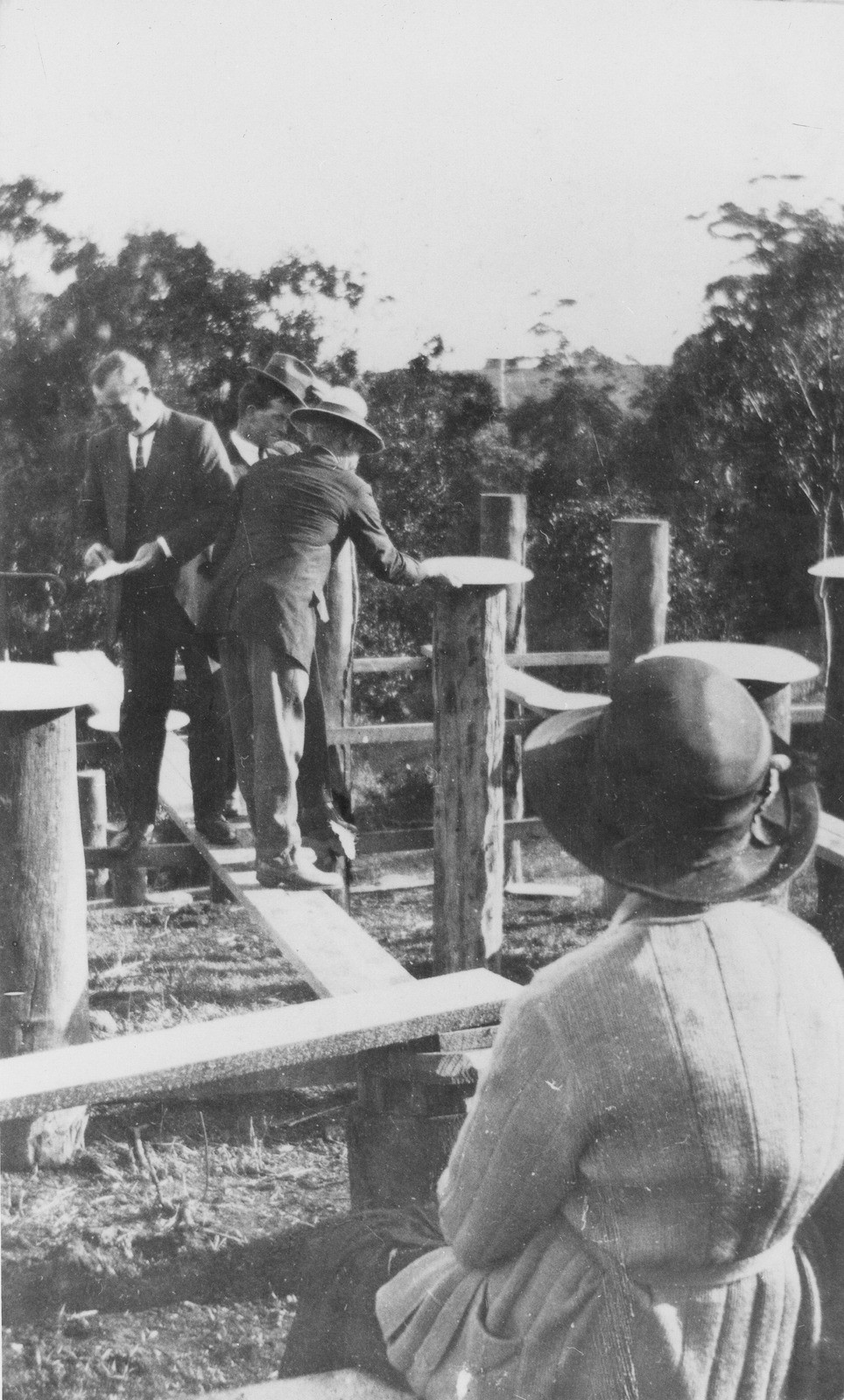
Stump capping ceremony during the construction of the Bald Knob Public Hall, 1924. John Oxley Library, State Library of Queensland Neg No: 151420.
At the top of the stump, a metal cap was appended to ensure that termites and ants were stopped in their tracks. The capping was an indication that the foundations were completed, and the building of the structure could proceed. This seemed a natural point at which to have a service or public event to celebrate the construction. The following image of a Queensland house at Red Hill illustrates the iron caps, peering over the edge of the wooden stumps.
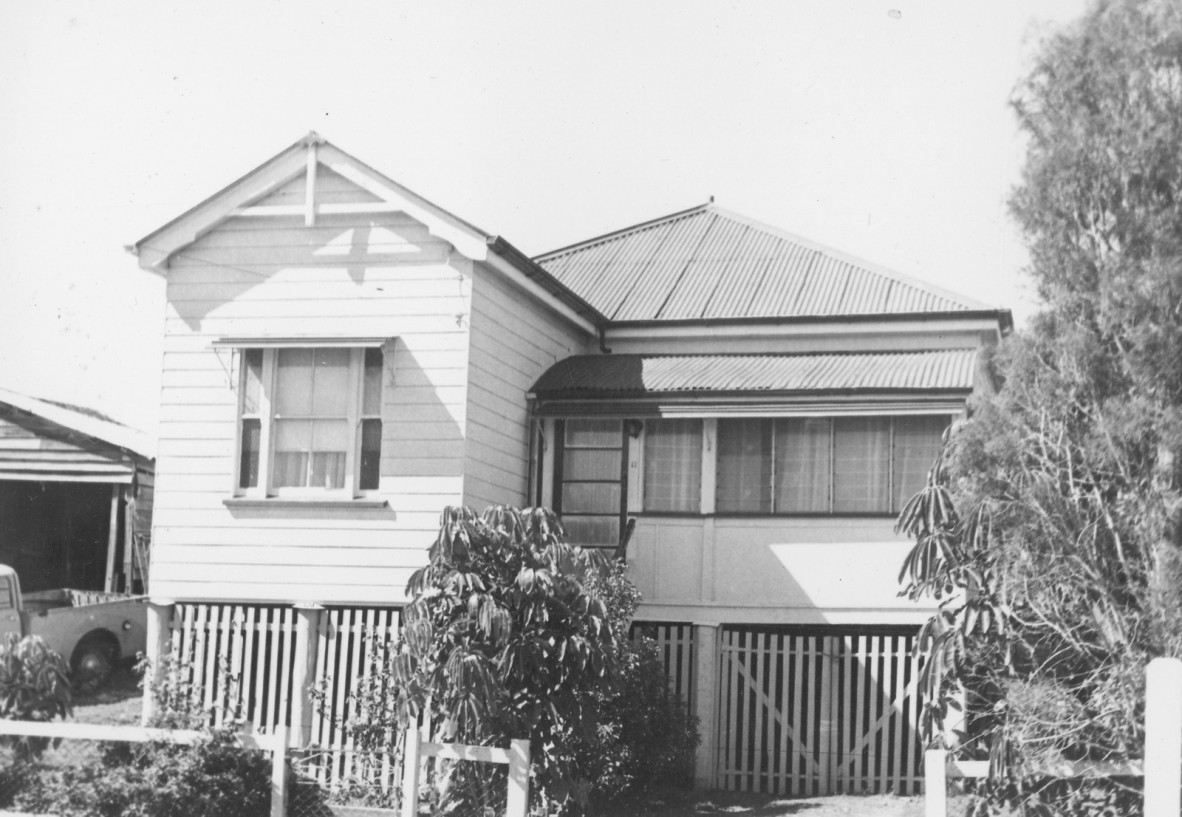
House in Paddington/Red Hill. Corley Explorer. John Oxley Library, State Library of Queensland Image No: 6169-1520-0001.
Stump capping ceremonies were often associated with churches, and the ceremonies were usually presided over by a senior cleric. Speeches were delivered praising the generosity of the parishioners in donating to the church building fund, and there was usually a choir or band performance, as well as refreshments – luncheon or afternoon tea.
Stump capping ceremonies or festivals continued right up until the 1950s, as illustrated by this newspaper article from 1952, showing Archbishop Halse of Brisbane capping stumps for the new Anglican church in North Rockhampton.
Morning Bulletin, Rockhampton, 24 November 1952, p 1. Image from Trove.
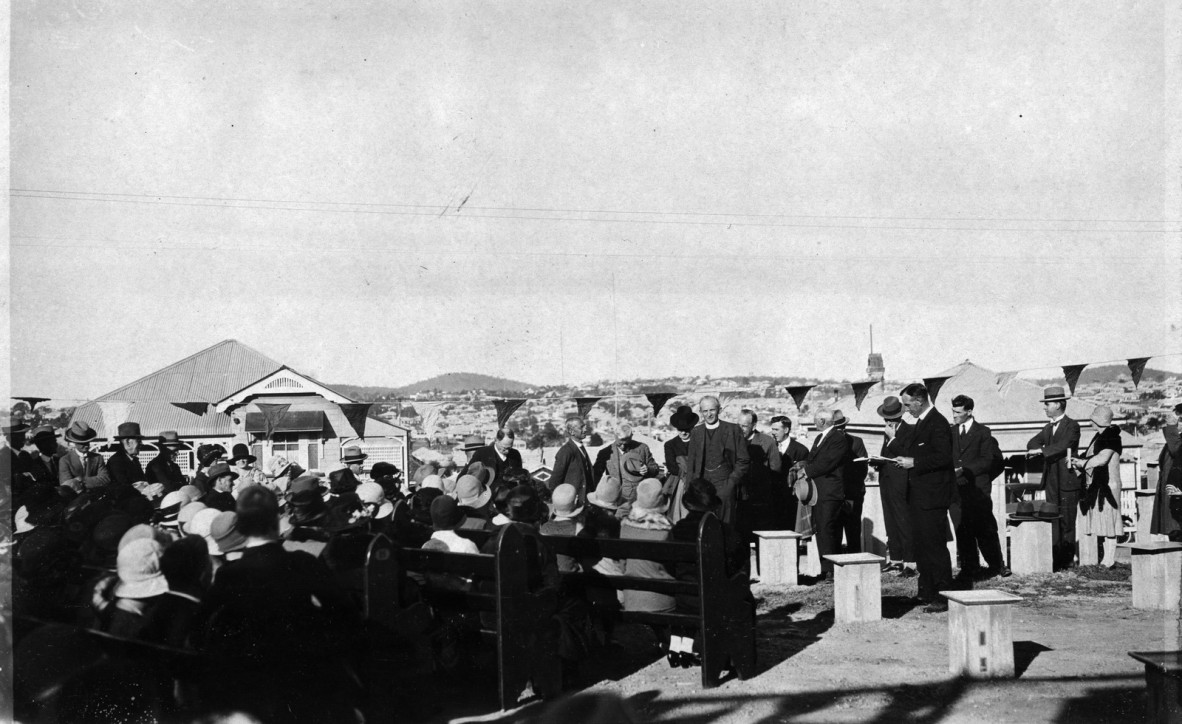
Stump capping ceremony at St John's Church, Annerley, about 1928. John Oxley Library, State Library of Queensland Neg No: 189893. Stump capping ceremonies were performed as a celebration of the commencement of the erection of a wooden church.
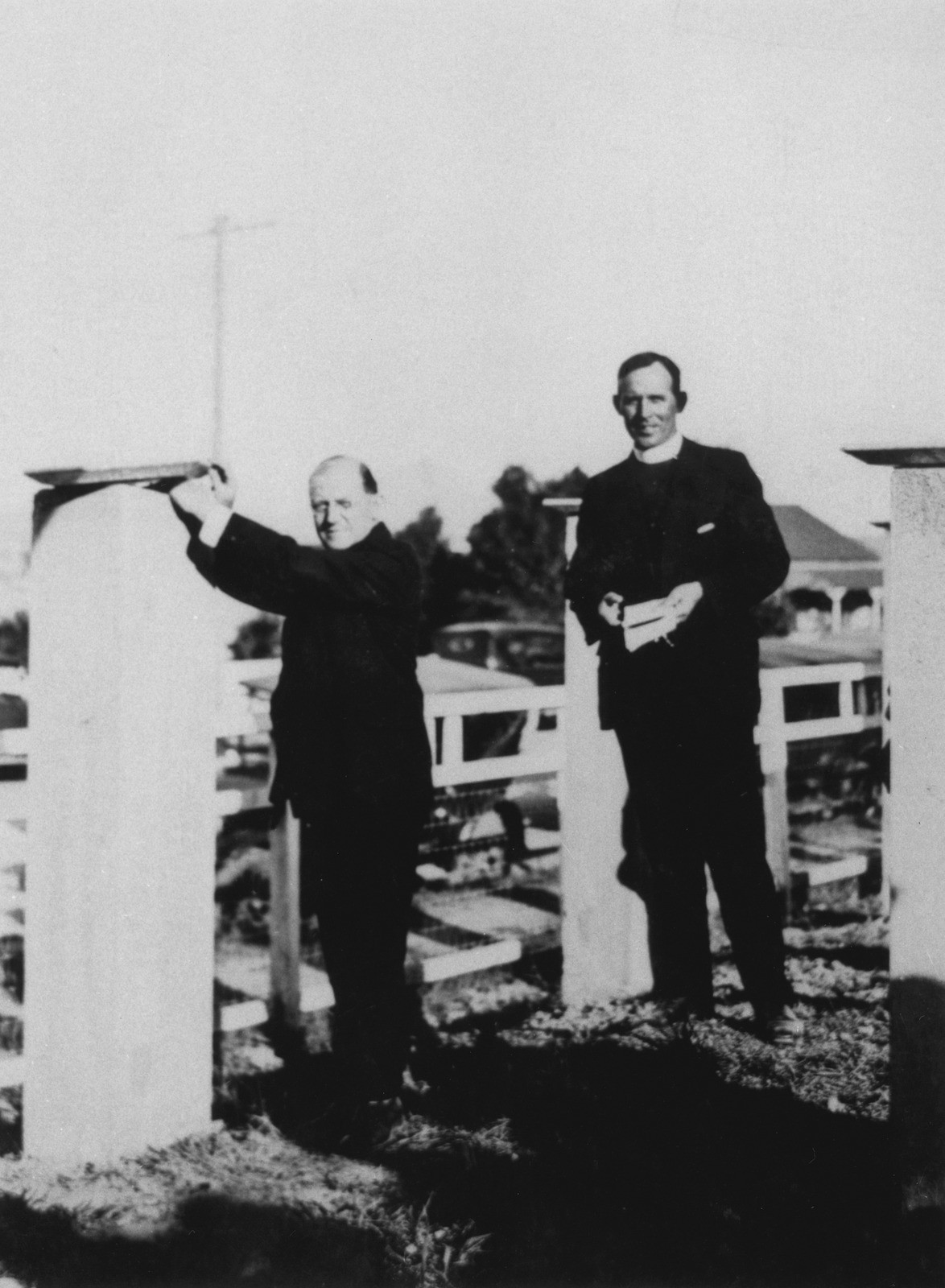
Stump capping of St John’s Church, Thompson Estate, Brisbane, ca. 1928. John Oxley Library, State Library of Queensland Neg No: 111004.
This unique Queensland ceremony was a meaningful ritual when many churches, public halls, schools of art and public libraries were weatherboard and, most importantly, built on stumps. Public buildings are now primarily brick or rendered concrete, and usually built on a cement slab, so the need for stump capping has gone.
More information on Queensland’s architectural heritage can be found on State Library of Queensland’s House History web pages.
More information
Family History Research Guides - https://www.slq.qld.gov.au/research-collections/family-history/family-history-research-guides
One Search - http://onesearch.slq.qld.gov.au
Comments
Your email address will not be published.
We welcome relevant, respectful comments.